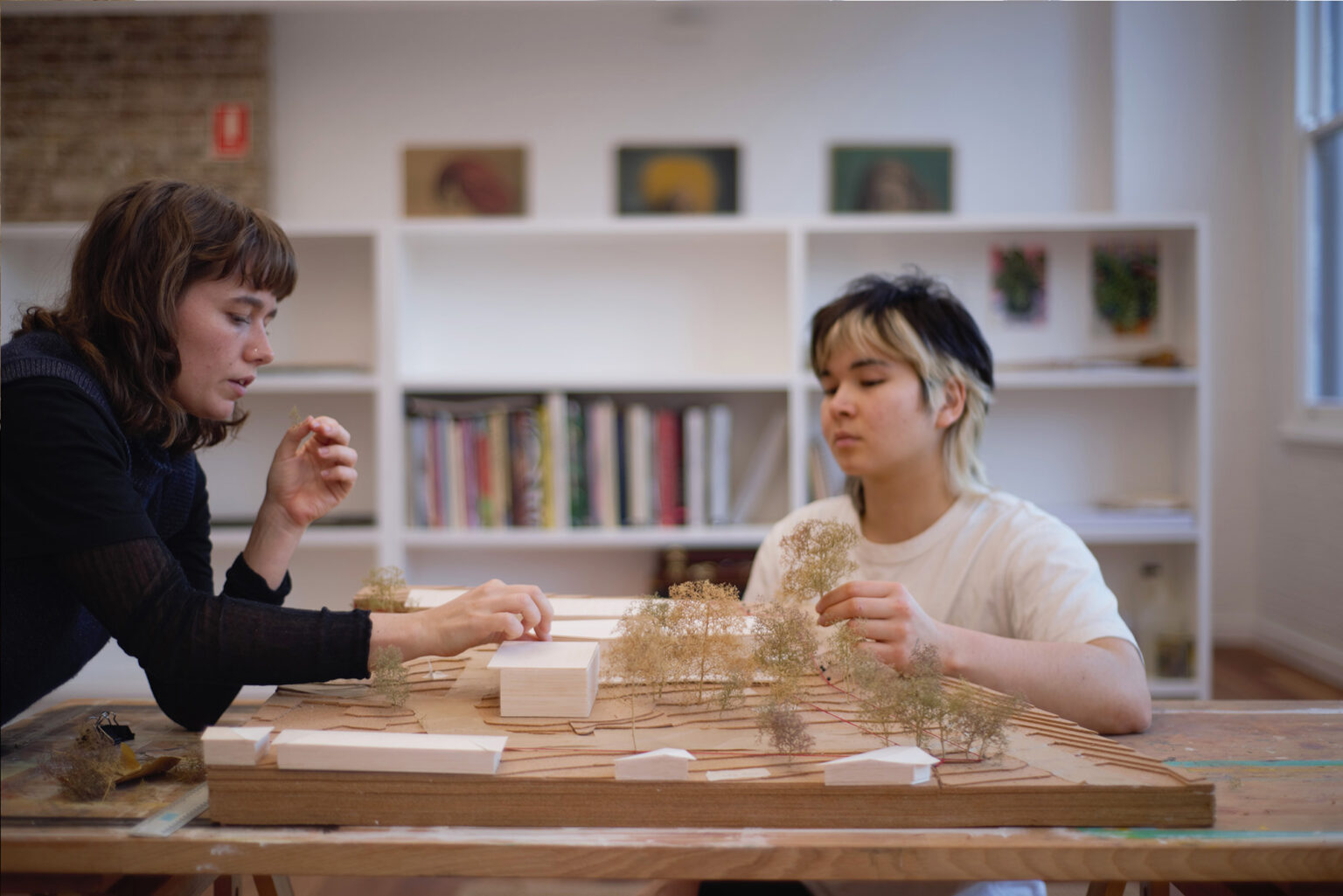For the past three years, Sam Crawford Architects has been operating on a nine-day fortnight model, with every second Friday dubbed Mies Day to reflect Mies Van Der Rohe’s dictum less is more. Sam Crawford takes us through the logistics (straightforward), the impact on staff (healthier and happier), clients (they think it’s great!) and productivity (better than ever).

We adopted the nine-day fortnight almost three years ago now. I had heard a radio interview about the successful and productive implementation of a four-day work week in some Scandinavian workplaces. We felt that a version of this might also lead to greater mental health and wellbeing, and therefore greater productivity, in our workplace. We were aiming for healthier, happier, more creative architects.
Hours in practice
The nine-day fortnight model is optional, though none have refused it. It is available to all full-time staff, from graduate to principal.
Every second Friday is what we call a Mies Day – in reference to Mies Van Der Rohe’s often cited dictum less is more. Everyone takes the same day off, which makes the logistics a lot easier. It also means that people actually take the day off, rather than being accidently scheduled for a meeting on their day off.
Exceptions
If a public holiday falls within the fortnight, then no Mies Day occurs in that fortnight. Otherwise, the studio is effectively shut every second Friday. There is often one or two people who work part of the day – they use the day to catch up on things, for a few hours.
The nine-day fortnight is not part of our official work agreements. It is an informal arrangement. If people need to occasionally work or are in contact with each other or clients on a Mies Day, they are OK with it. That is part of the arrangement. It is the exception rather than the rule. Who does not want to work less and get paid the same amount? None, so far.

Policy and pay
We announced the nine-day fortnight as a six-month trial. We have simply extended the trial. It does not form part of our formal workplace agreement. Everyone’s pay is for a 10-day fortnight. Full-time pay has not been reduced. If staff need to work some additional hours on other days to catch up, so long as that does not go over 80 hours per fortnight, then it is not considered overtime. This has been done in consultation with everyone, and everyone is happy with the arrangement.
Logistics and implementation
The implementation of the nine-day fortnight is very straightforward. Our office manager simply drafted some wording for our employee handbook.
The nine-day fortnight does not interfere with flexibility. We encourage staff to work in the studio. Architecture is a collaborative practice best done in person. But we are flexible when the circumstances warrant flexibility.
We work an eight-hour day. No all-nighters.

Wellbeing outcomes
The main benefit has been staff wellbeing. Staff love: Sleeping in. Art classes. Playing with kids. Long weekends up the coast. Shopping. A day just for me. And welcome time for medical appointments and life admin.
We survey staff wellbeing via an anonymous online survey each quarter. The feedback on the nine-day fortnight is overwhelmingly positive with regards to staff wellbeing – most staff feel less stressed, and are able to manage their workload.
Absenteeism is much the same as before. People still get sick or have to look after children. Burnout has been reduced. We do not have formal stats on staff retention, but we do have strong retention in the practice. Staff really only ever leave due to a change in life circumstances, rather than to go to a better workplace.
Clients
We have had no particular issues with clients over availability. Clients think it’s great. We consulted with staff and educated clients and consultants to ensure its success. If there is a meeting that has to take place on a Mies Day – and it is critical – then we will attend on that day. Being a Friday, that almost never happens.
Productivity
We are more productive that we have ever been. The quality of our work has not suffered. The profitability of the practice has not suffered.
The measuring of productivity is not an exact science. The basic questions we ask are – are we getting the work done? Yes. Are we keeping our clients happy? Yes. Are we producing quality work? Yes. Are we profitable? Yes.

Sam Crawford Architects, based in Newtown in Sydney’s inner west, is currently a practice of 23. The practice has a family-friendly, flexible office culture and strong values. It specialises in public, educational, commercial and residential projects of all types, scales and budgets, and, over the last 25 years, has successfully completed more than 200 projects.




















